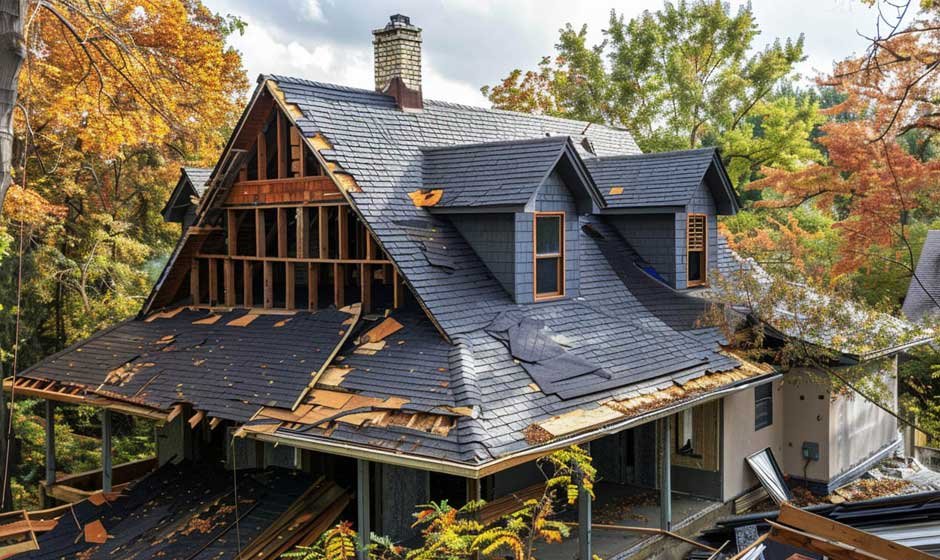Living in a noisy environment can significantly impact your comfort and well-being at home. Sounds from traffic, construction, neighbors, or nature may penetrate your living space and disrupt peace. One effective yet often overlooked solution to reduce indoor noise pollution is roof replacement. The roof acts as a protective barrier not only against weather but also against external sounds. By replacing an old or damaged roof with modern materials and designs, homeowners can dramatically improve sound insulation and create a quieter indoor environment. We will explore how roof replacement contributes to noise reduction, enhancing your home’s tranquility and comfort.
The Role of Roof Replacement in Minimizing Indoor Noise
Upgrading Roofing Materials for Sound Insulation
Roof replacement allows the selection of materials that are inherently better at blocking and absorbing sound. Traditional roofing materials like thin metal sheets or worn-out shingles often allow noise to travel freely into the house. Newer materials, such as architectural shingles, composite roofing, or thicker tiles, have properties that dampen sound waves. These materials absorb vibrations and prevent them from transferring into the interior spaces. Moreover, modern roofing products frequently include sound-deadening layers that minimize noise transmission. By working with companies like Janson Construction, homeowners can effectively reduce the volume of outside noise entering the home by choosing roofing materials with better acoustic qualities during a replacement.
Improving Roof Structure and Insulation
Replacing a roof also provides the chance to upgrade or add insulation beneath the roofing surface. Insulation materials like foam boards, fiberglass, or cellulose improve energy efficiency and serve as noise barriers. The insulation fills gaps and reduces the space through which sound waves can travel. An older roof may have inadequate or damaged insulation that allows sound infiltration. Roof replacement enables the installation of improved insulating layers that significantly reduce airborne noise from rain, wind, or street sounds. The enhanced structure and effective insulation create a quieter indoor environment by blocking unwanted noise at the source.
Sealing Gaps and Structural Weaknesses
Over time, roofs develop cracks, holes, and loose seams that become entry points for noise. Wind can cause vibrations that intensify noise inside the house, especially during storms or heavy rainfall. Roof replacement involves thorough inspection and repair of these structural weaknesses. The process includes sealing gaps, replacing broken components, and tightening roofing elements to create a continuous, sound-resistant barrier. Eliminating these vulnerabilities prevents noise from leaking into living spaces. Thus, a newly replaced roof uses better materials and ensures a more secure and airtight fit that naturally reduces noise pollution.
Adding Soundproofing Layers and Underlayment
Modern roof replacement often incorporates advanced underlayment materials designed specifically to reduce noise. These layers, installed between the roof deck and the outer roofing material, absorb impact noise such as rain or hail and reduce the transmission of airborne sounds. Certain synthetic or rubberized underlayments act as sound buffers that soften and disperse noise vibrations. Including these soundproofing layers during a roof replacement project enhances the home’s ability to resist noise from the outside environment. This additional layer of protection contributes to a noticeably quieter indoor atmosphere, making it easier for residents to relax and concentrate.
Enhancing Roof Design and Slope
Roof replacement offers the opportunity to adjust the roof’s design and slope, which can influence how sound behaves around the house. Steeper or more complex roof shapes may deflect sound waves away from the home more effectively than flat or simple roofs. A replacement project can include redesigning the roof to optimize acoustic performance. By changing angles or adding architectural features like overhangs or dormers, the roof can serve as a noise diffuser that scatters sound waves instead of allowing them to concentrate near windows or walls. This strategic design consideration during roof replacement helps reduce the overall noise impact inside the home.
Reducing Vibrations Transferred Through the Roof Structure
Noise pollution inside a home often comes from direct sound waves and vibrations transmitted through the building structure. A damaged or deteriorated roof may amplify these vibrations due to loose or aged components. Roof replacement strengthens the entire roof system by replacing weakened trusses, rafters, or decking. This reinforcement reduces the transmission of vibrations caused by external noise sources such as nearby traffic or construction activities. A solid and well-maintained roof structure acts like a shock absorber, limiting the passage of noise vibrations into the living space and contributing to a quieter home environment.
Increased Durability and Longevity Against Noise-Related Wear
Older roofs are prone to damage caused by consistent noise impacts, such as hailstorms or high winds, which can create tiny openings that let in noise. Replacing the roof with durable, high-quality materials ensures long-term resistance against these effects. A sturdy roof maintains its soundproofing qualities over time without requiring frequent repairs. This longevity reduces the likelihood of noise infiltration caused by gradual wear and tear. Homeowners benefit from sustained noise reduction and a quieter home environment thanks to the durability improvements that come with roof replacement.
Replacing an aging or inadequate roof offers multiple benefits in reducing noise pollution inside the home. Through upgraded materials, improved insulation, and enhanced structural integrity, a new roof acts as a powerful barrier against outside sounds. Adding soundproofing layers, strategic design adjustments, and careful sealing of gaps amplifies noise reduction. This investment improves comfort and contributes to a healthier living environment by minimizing the stress and disruption caused by excessive noise. Homeowners seeking tranquility will find that roof replacement is a valuable step toward achieving a quieter, more peaceful home atmosphere.










